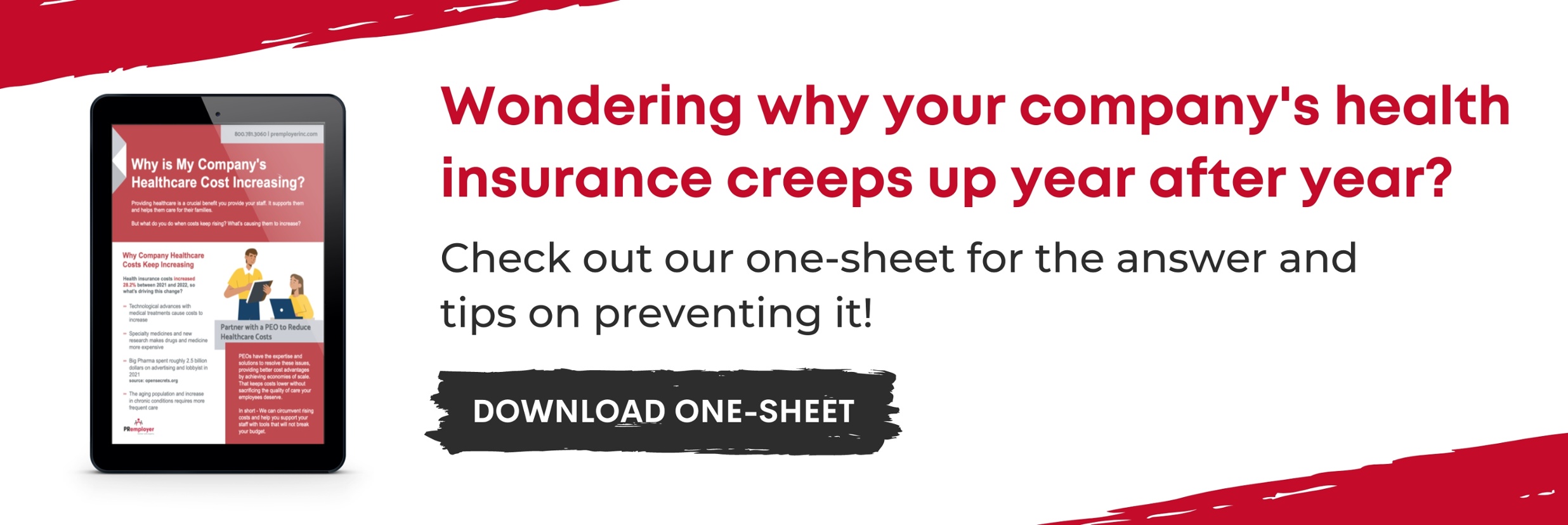Providing top-quality healthcare benefits to your employees comes with undeniable advantages. Not only do you attract and retain top talent in your industry, but healthy employees mean reduced absenteeism, boosted productivity, and an overall stronger workforce. Additionally, health insurance tax deductions can provide significant savings for your business. For many employees, access to robust healthcare benefits is one of the most critical factors when evaluating current or potential job opportunities.

But here's the question you need to ask yourself in 2025: Are you paying too much for your share?
The average cost of employer-provided health insurance is steadily rising. For single coverage, the average policy can cost over $8,000 annually, with most employers covering approximately 80% of the premium. However, costs can vary, and some companies may unknowingly overextend their budgets on healthcare. How do your healthcare expenses measure up? And more importantly, how can you identify if you’re overpaying?
In this post, we’ll discuss some of the signs that indicate you’re overpaying for healthcare and what you can do about it
Signs You’re Overpaying for Healthcare
Below are four signs that you’re spending too much on healthcare, along with actionable tips to help you stabilize costs while maintaining quality benefits.
1. High Administrative Fees
Every healthcare plan comes with some administrative costs, including taxes, commissions, and provider fees. While these costs aren't entirely avoidable, they shouldn’t be taking up a disproportionate portion of your premiums.
Here’s what you can do to save:
- Request a detailed breakdown of your healthcare costs from your provider.
- If administrative fees account for a significant percentage of your expenses, consider searching for alternative plans with lower management fees.
- Research third-party administrators (TPAs) that can deliver more transparency and potentially lower fees.
Administrative fees shouldn’t exceed reasonable limits. If they do, it may be time to shop around.
2. Low Deductibles and Copays
Lower deductibles and copays are attractive to employees but can become costly for employers. Plans with low cost-sharing typically require higher premiums, which means higher expenses for your business.
To strike a balance between affordability for your employees and reducing your costs, consider plans that require moderate deductibles and copays. This approach allows you to manage costs while still offering competitive health benefits to your team. Additionally, employees who are actively involved in their health expenses may engage more thoughtfully with their healthcare choices.
3. Multiple Providers for Benefits
If you’re using separate providers for dental, vision, life, disability, and medical insurance, you’re likely overpaying. Splitting these benefits across multiple vendors can quickly increase costs, and you may even find hidden overlaps or duplicated offers in your coverage. You will also lose significant time by having to keep track of and coordinate across multiple people.
Instead, bundle these benefits under a single provider. Purchasing multiple types of coverage from a single insurer often results in package discounts and more straightforward administration – and gives you a single point of contact for updates.. Review your current policies to identify areas where consolidation can save money and streamline processes.
4. Going It Alone
Small businesses, in particular, are at a disadvantage when negotiating with healthcare providers and can use that leverage to provide lower premiums and costs for the same policies.
This is where partnering with a Professional Employer Organization (PEO) can make a difference. PEOs pool resources to gain access to cost-effective, large-scale benefits typically reserved for bigger businesses. By leveraging this buying power, small and midsize businesses can secure high-quality healthcare for their employees at competitive rates.
Next Steps to Stabilize Your Healthcare Costs
Providing healthcare benefits is a critical investment in both your employees and your business. While costs can quickly add up, there are many strategies to reduce unnecessary expenses without sacrificing the quality of the benefits your team relies on.
Start by evaluating your current healthcare plans and identifying areas where you can make changes. Consider partnering with a PEO for more significant savings, bundle benefits under a single provider, and re-negotiate administrative fees if needed. By staying vigilant and proactive, you can ensure that your company is getting the best rates for top-quality healthcare in 2025 and beyond. So don't wait - take charge of your healthcare costs now to secure a healthier future for your employees and business.
Work with a PEO like PRemployer to Stabilize Healthcare Costs!
PRemployer is an experienced PEO partner that can provide companies a direct contact for all of their healthcare needs, giving them more choice over exceptional benefits – often at lower costs. That’s in addition to all of the other services PEOs provide, such as retirement plans and compliance management.
PRemployer’s team can help you evaluate your current healthcare expenses, identify savings opportunities, and guide you toward smarter, more stable solutions.
Contact us today to learn how we can help you lower your healthcare costs while empowering your workforce with exceptional benefits.

